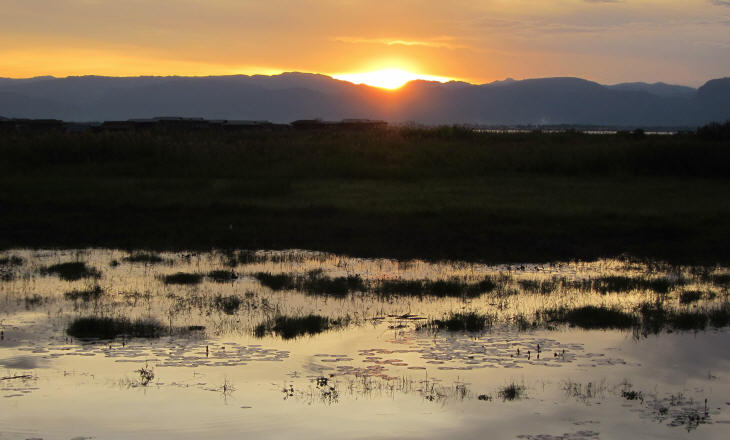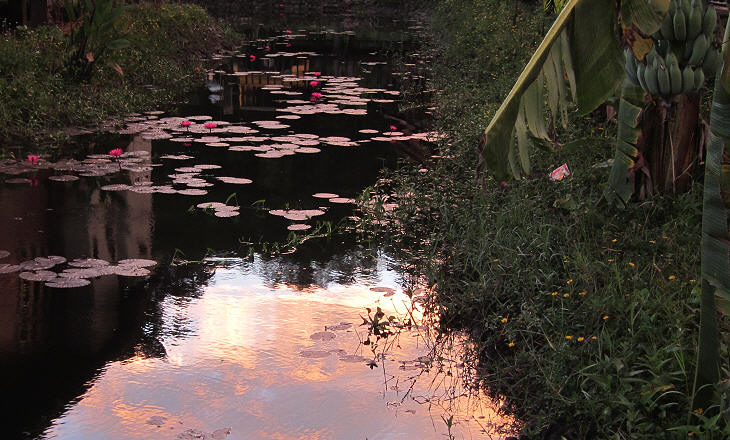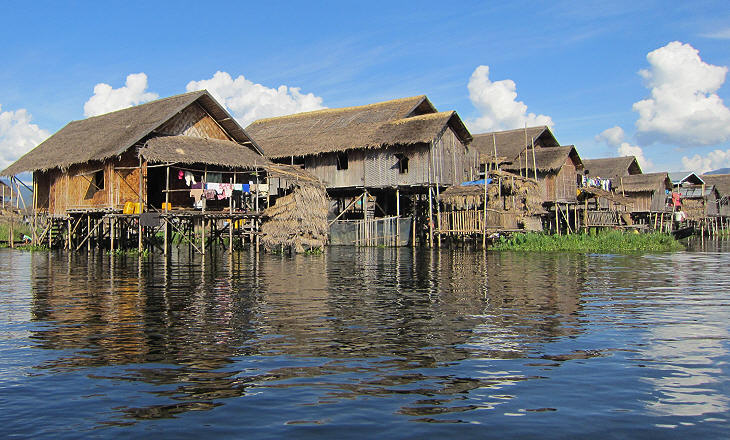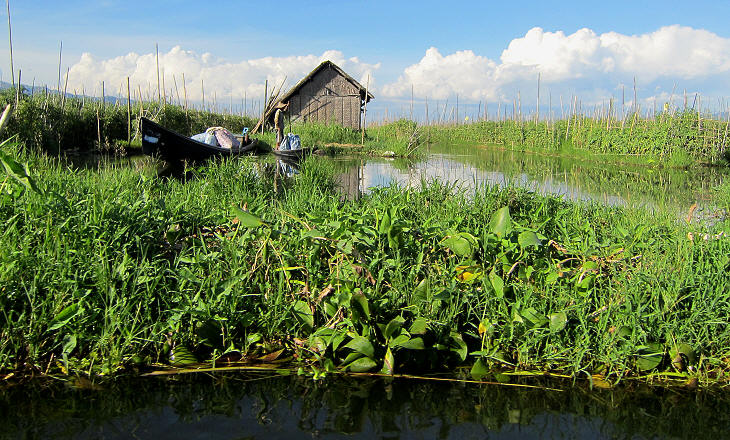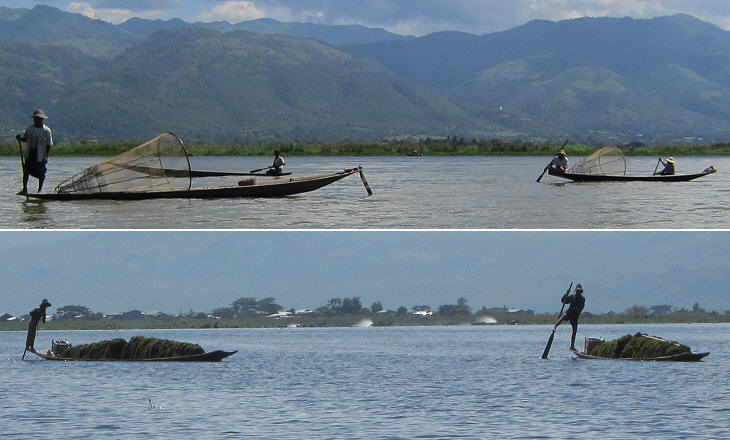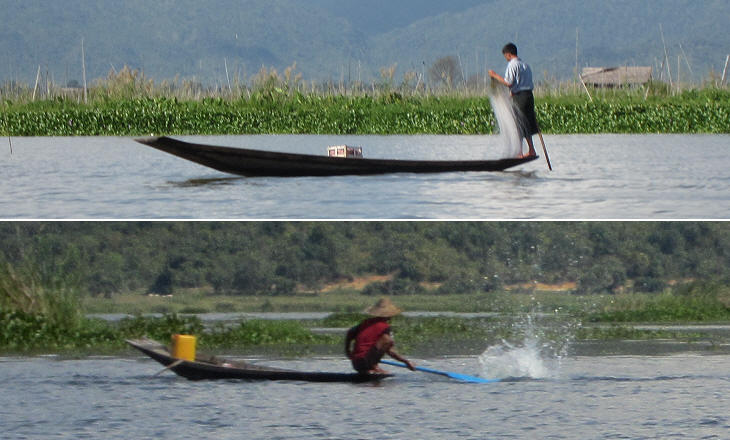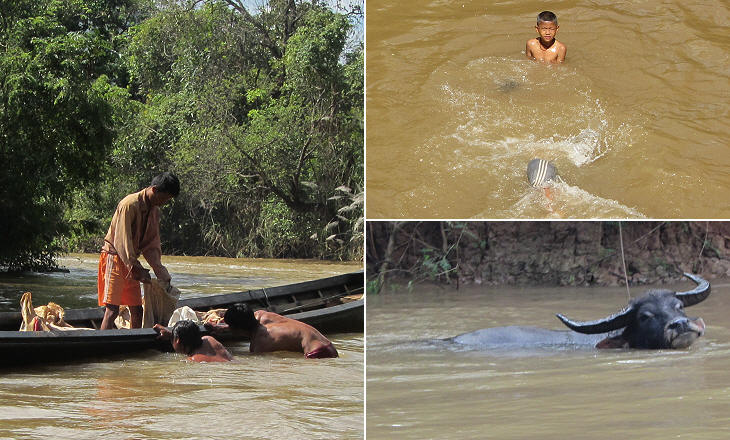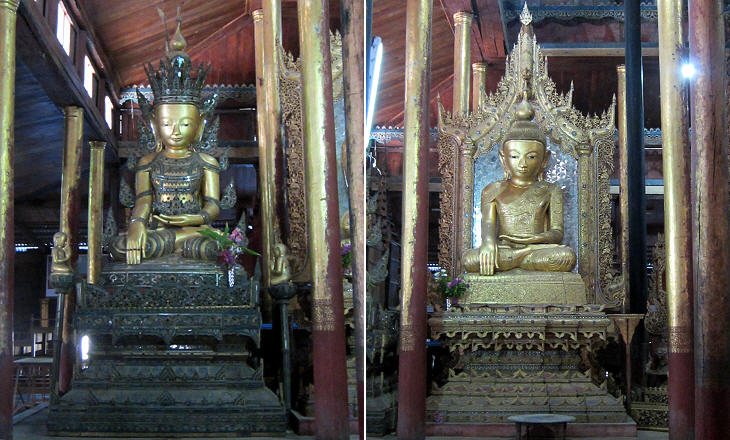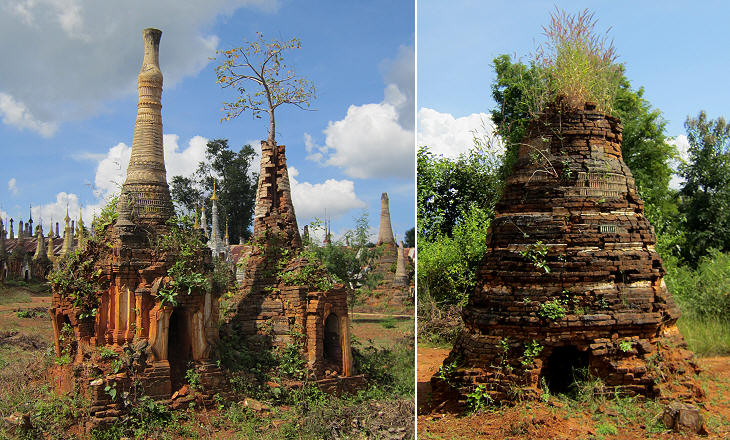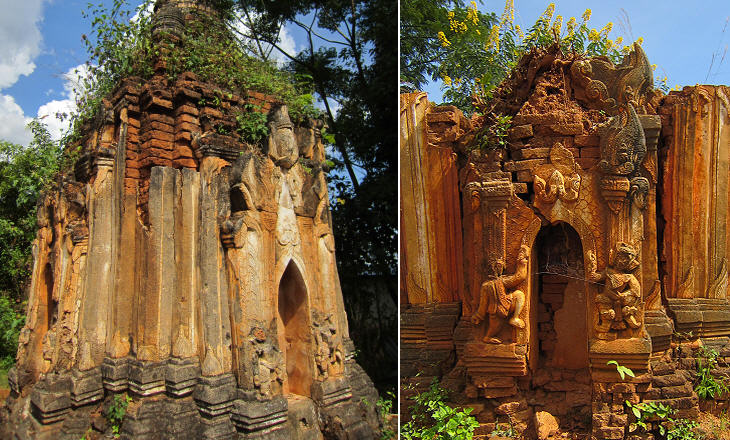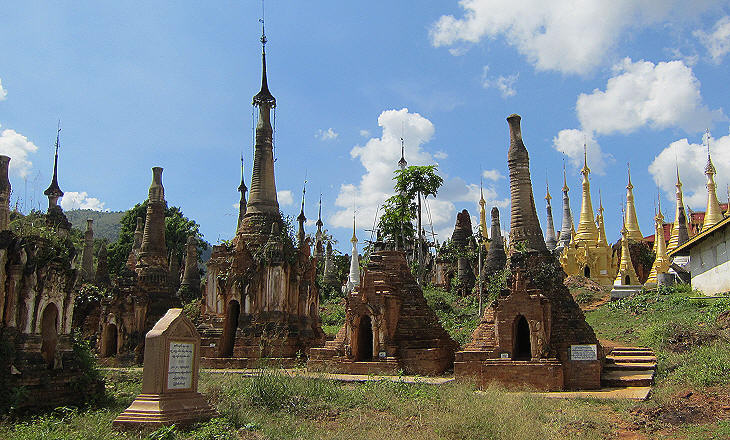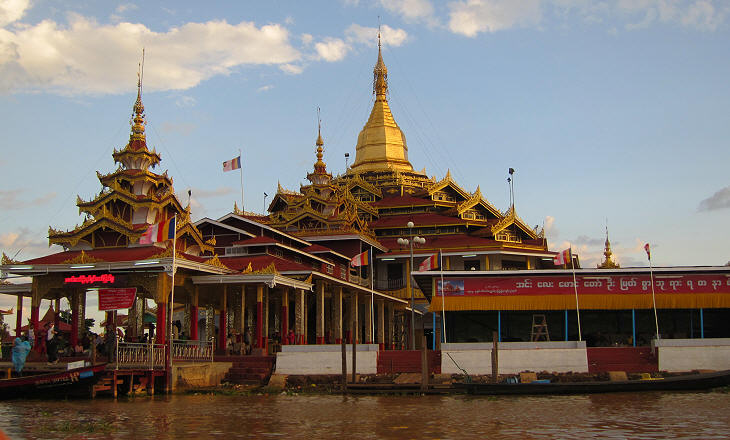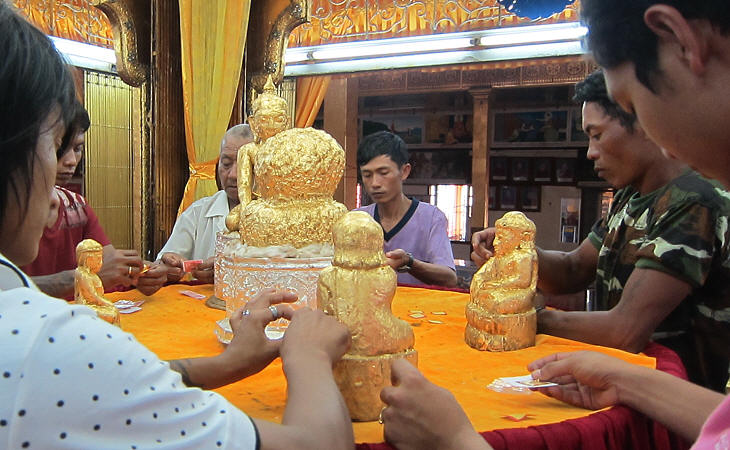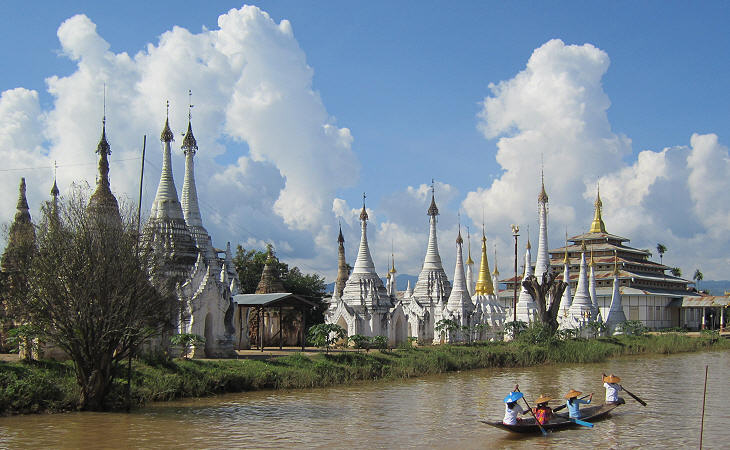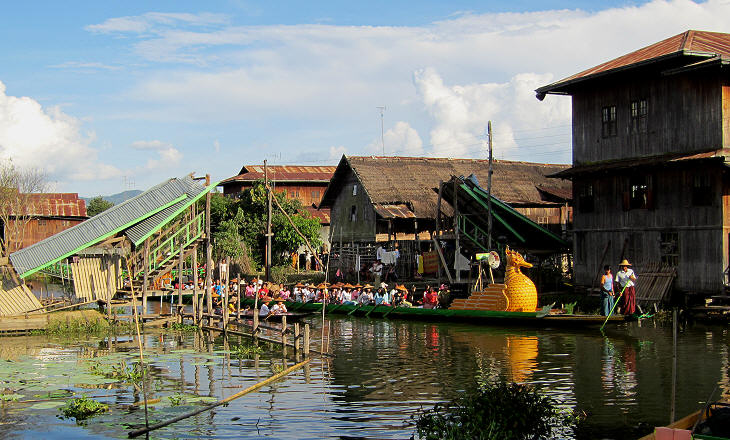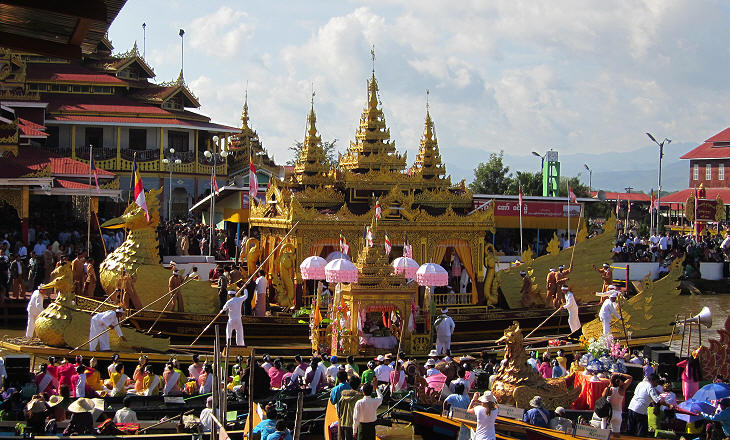

What's New!
Detailed Sitemap
All images © by Roberto Piperno, owner of the domain. Write to romapip@quipo.it. Text edited by Rosamie Moore.
Page added in January 2013.
|
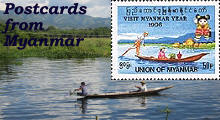 - Inle Lake - Inle Lake
(Inle Lake)
Inle Lake is a small lake in the highlands to the east of the Irrawaddy River, Burma's largest river which crosses the country from north to south. It is situated in the Shan State and its inhabitants do not belong to the Bamar, the main ethnic group of Burma.
The development of mass tourism has brought some benefits to the local economy, but not to the fishermen and peasants who live in the southern parts of the lake and who see more and more fast boats full of tourists come to their villages. The surface of the lake is just 44 square miles during the rainy season and it diminishes every year.
You may wish to read Wikipedia's entry for this lake - it opens in a separate window.
Sunset
Water lilies and bananas at dawn
Stilt houses
Floating gardens
Leg rowing fishermen (above) and weed harvesters (below)
Other fishermen (the image used as background for this page shows another fisherman)
Life in a river emptying into the lake near Indein: (left) men collecting mud used as fertilizer: (right) children (above) and a water buffalo (below) taking a bath
Statues of Buddha (in the Earth-touching position) at Nga Phe Kyaung Pagoda
Votive stupas (temples) built to gain spiritual benefits at Indein
Other votive stupas retaining parts of their decoration at Indein
Votive stupas about to be "restored" thus losing their evocativeness at Indein
Phaung Daw U Pagoda
Believers applying gold leaf on statues of Buddha at Phaung Daw U Pagoda
Votive stupas near Phaung Daw U Pagoda
Preparations for the Phaung Daw U Festival
Phaung Daw U Festival: the main boat moors at the pagoda
You may wish to compare Inle Lake with Tonle Sap, a lake in Cambodia.
AN UNACCEPTABLE FREAK SHOW
The population of Myanmar is made up of more than a hundred ethnic groups. Over the centuries some of these groups have developed ways to enhance their identity through costumes, headdresses, tattoos, etc.
The Kayan Lahwi (aka Padaung - see Wikipedia's entry - it opens in a separate window), a tribe living in the Shan State (but not near Inle Lake), make their daughters wear brass rings around their neck so that the upper bony segments of the spine become elongated.
It is a practice which causes permanent health damage and which must be discouraged. Unfortunately unscrupulous shopping centres at Inle Lake exhibit Kayan Lahwi women to attract more tourists. Travel operators (in my case Kipling Tours) are happy to bring groups there, rather than to a pagoda.
The practice would likely be abandoned in the near future, but parents could
be tempted to establish an income from this deformity and continue to torture their daughters.
Responsible travel agents should discontinue agreements with shopping centres exploiting this cultural diversity as a freak show.
|
Go and see Phaung Daw U Pagoda Festival or move to:
Introductory page
Bagan
Mandalay
Yangon (Rangoon)

SEE THESE OTHER EXHIBITIONS (for a full list see my detailed index).
 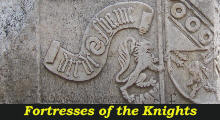 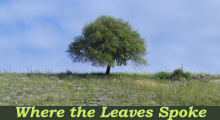
|


 - Inle Lake
- Inle Lake



